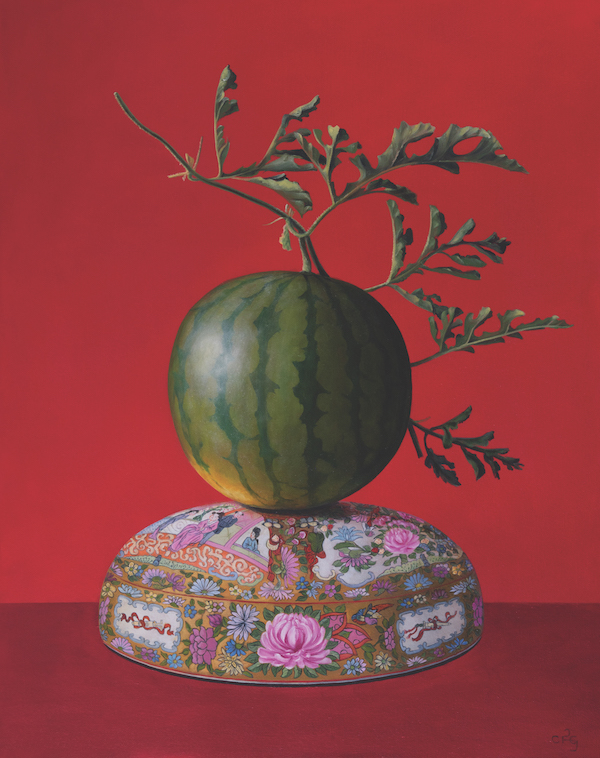“Sharing food is a common language that transcends nationality or locality,” says Adelaide-based artist Catherine Fitz-Gerald. “Participating in food preparation bonds complete strangers and families everywhere and the exchange of harvests fosters the creation of communities. This is what I celebrate in my paintings.” The artist delights in producing playful compositions saturated in colour, revelling in imagery of fruits both familiar and strange. Fitz-Gerald rejects the traditional paradigm of a still life, wherein the Old Masters used fruit – often decaying with flies – to remind their viewers of the fleeting nature of life. “I hope to encourage people to re-evaluate fruit as more than something plastic-wrapped on a supermarket shelf,” says the artist, who instead uses fruit as an embodiment of abundance and joy, bursting from their frame. Bright swathes of colour delineate meticulously rendered forms. While some of her pieces seem to be plucked straight from a garden, others are more playful, with fruits balancing precariously or positioned in unexpected places. In each case, Fitz-Gerald is inviting her audience to look closer, to truly appreciate fruit in all its wonderful forms. The artist’s next project will take her practice one step further, with a book Alphabet Fruit featuring her best works alongside recipes, many of which she has sourced from viewers who were inspired by her works. Even after 20 years of painting fruit, it appears there are no limits to Fitz-Gerald’s ability to find innovative ways to depict a kitchen staple.
Featured image:Catherine Fitz-Gerald, Xigua, 2017. Limited edition Giclee print, edition 5 of 10, 102 x 86cm.

